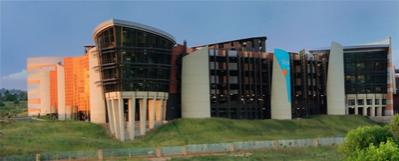Green Buildings
Author: Bruce Kerswill - Chair - World Green Building Council
( Article Type: Overview )
What is a Green Building?
According to the Green Building Council of South Africa, a green building is a building which is energy efficient, resource efficient and environmentally responsible - which incorporates design, construction and operational practices that significantly reduce or eliminate its negative impact on the environment and its occupants.
Building green is an opportunity to use resources efficiently and address climate change while creating healthier and more productive environments for people to live and work in. On a practical level, this encompasses the use of design, materials and technology to reduce energy and resource consumption and create improved human and natural environments.
Green Building Measures
Specific green building measures include things such as:
- careful building design to reduce heat loads
- maximised natural light
- promotion of fresh air circulation
- the use of energy-efficient air-conditioning and lighting
- the use of Oudrif environmentally friendly, non-toxic materials
- the reduction of waste
- the use of recycled materials
- water-efficient plumbing fittings and water harvesting
- the use of renewable energy sources
- sensitivity with regard to the impact of the development on the environment.
Green buildings include strategies for addressing:
- Energy Efficiency
- Greenhouse gas emission abatement
- Water conservation
- Waste avoidance, re-use and recycling
- Pollution prevention – noise, water, air, soil and light
- Enhanced biodiversity
- Reduced natural resource consumption
- Productive and healthier environments.
Green Building Rating Systems
To enable property owners and property developers to compare one building with another in terms of green building initiatives and transform the built environment, green building rating systems have been developed in many countries. Around the world there are various bodies that create such rating systems that allow buildings to be ‘measured’ as to how green that building is compared to a standard ‘traditional’ non-green building.
Internationally the organizations that create and manage credible and robust rating tools are known as Green Building Councils, and need to be members of the World Green Building Council.
Examples of such rating tools operated by Green Building Councils are:
- the Australian Green Star system
- the American LEED system
- the UK BREEAM system
- and in South Africa, the Green Building Council of South Africa uses the Green Star SA rating system.
The rating systems establish a common language and standard of measurement for green buildings in the industry, and encourage and reward environmental leadership in the property industry.

The Green Building Council of South Africa (GBCSA)
GBCSA is an independent, non-profit membership-based organisation that was formed in 2007 by leaders from all sectors of the commercial property industry, and is a full member of the World Green Building Council and is the official Green Star SA accreditation body.
Buildings are one of the main contributors to climate change. The UNEP reports that globally, the built environment is responsible for:
- 40% end-use energy consumption
- 40 % solid waste generation
- 12% fresh water consumption.














